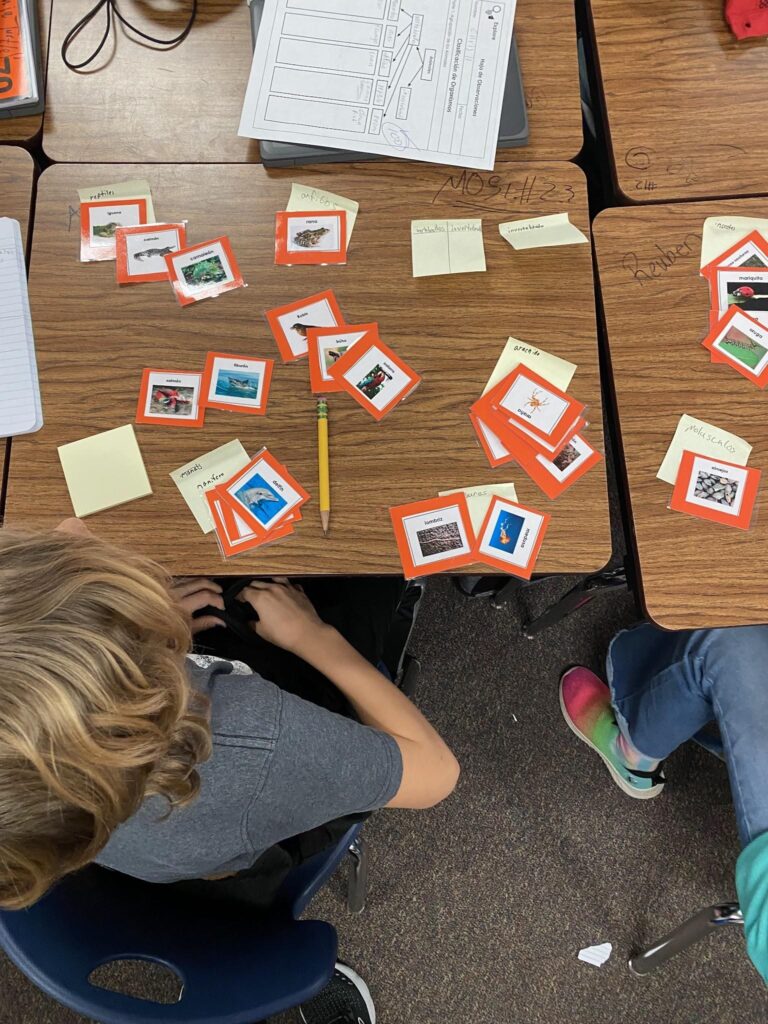by Cristina Zakis
This year I began a new adventure and intellectual challenge as I accepted a position to be a 5th Grade Dual Language Immersion teacher. I teach Math and Science in Spanish to two classes of fifth grade students; they take Social Studies and Reading/Language Arts in English with the English DLI teacher.
Our teacher partnership is crucial as my partner teacher reinforces the main Math and Science concepts in English on her side so that the students make the connections to the language they will be tested in: English. On my side, the Spanish side, I provide opportunities for the students to explore the concepts, learn the Tier 3 and Tier 2 words in Spanish, and engage in academic conversation in Spanish. Everything in my classroom must occur in Spanish. Because these students have been in the DLI program since Kindergarten, I do not need to focus time on the acquisition of Tier 1 words. They come up in conversation and in reading, so we review them as needed.
When I introduce a new academic concept or theme, there are 3 critical steps I take. These steps are key for my students, who are learning Spanish – but they are just as critical for students learning English, or any other language!
Three Critical Steps for Introducing a New Concept or Theme
- Assess how much vocabulary knowledge the students already have about the topic in Spanish. I typically do this by gathering the students on our special rug and together and creating an anchor chart/web on chart paper of key words and phrases having to do with the topic. This becomes an interactive web as we continue to add words to it throughout the unit.
- Provide conversation starters that will act as a springboard to students’ partner talks. I write these on bright sentence strips that stay posted on the board throughout the unit.
- Review the content slides that provide a visual for each of the important vocabulary words that are most likely new to the students. The slides also lead to opportunities for the students to turn and talk with their partner about what they have learned and what questions they have.
This process is beneficial for students learning any language because it starts with what students already know. Building off that prior knowledge validates their previous learning as an asset. The students realize that they are not starting from zero, which builds their confidence and empowers them to continue learning.
List-Group-Label
Another useful strategy for language learners is called List-Group-Label. The class works together to generate a list of words or ideas related to the topic. The teacher then creates a word card or a picture card for each item on the list. Students sort the cards into groups, then create labels for each group.

In this picture, students in my class are classifying animals based on the information we have discussed. With their group, they had to sort the pictures and create appropriate labels in Spanish. This activity counted as a classwork grade for the assessment. As I listened to their conversations, I could tell if they understood the goal and the information we had covered. This hands-on practice served to solidify the concept of classifying animals, which prepared them for the final test.
I have found that teaching academic content in Spanish to English dominant students is not only possible, but rewarding. The students are excited to make connections between the languages and are poised for growth!